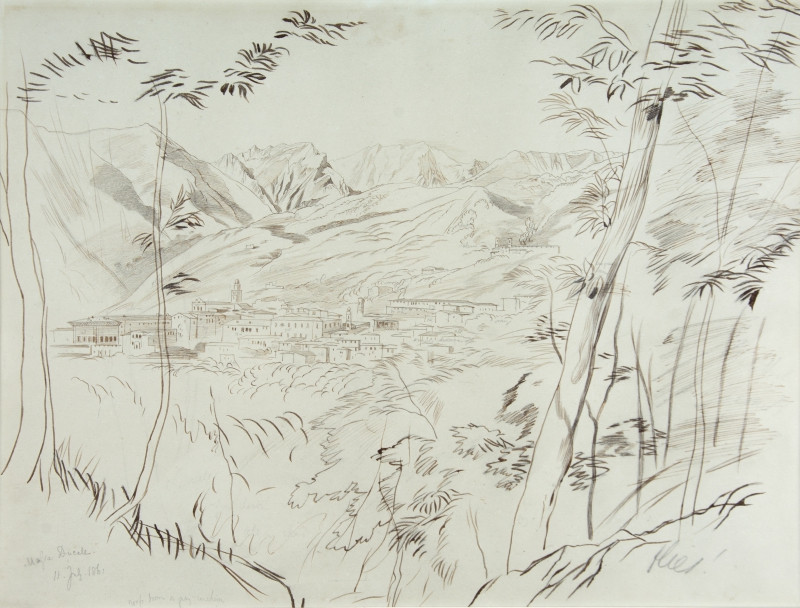
(click image to enlarge)
Between May and August 1861, Edward Lear travelled in Switzerland and Italy, with his Greek servant, Giorgio Kokali. In mid July, he was exploring the Tuscan coast and, on 11 July, reached Massa. From the fifteenth to the nineteenth centuries, the town was the capital of the Principate, then Duchy, of Massa and Carrara and, during Napoleon’s reign, was ruled by his sister, Elia Baciocchi, as part of the Grand Duchy of Tuscany. At the time of Lear’s visit, it had just become part of the newly unified Italy.
In his diary for 11 July 1861, Lear described Massa as ‘ἒτσι κ´ ἒτσι’, that is ‘so and so’, and added that he ‘had once seen that more than a day here would be troppo’. Initially, he found little ‘worth drawing’, but at 3:30pm, after lunch and a siesta, he went with Giorgio ‘to an isolated chestnut-&-pine covered hill & drew till 5.30. Oranges frequent’. That session resulted in the present drawing.
As he left Massa for Carrara in the late afternoon, and rose into the hills, Lear became aware of what he called the town’s ‘true character’, as ‘the Castle & palace & town [came] out like spots of gold from the green plain’.
(The diary extracts were transcribed by Marco Graziosi from the manuscript, MS Eng. 797.3, in the Houghton Library at Harvard University.)